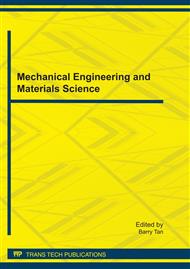p.101
p.105
p.111
p.116
p.121
p.127
p.132
p.141
p.146
Optimization of Poly(β-L-malic acid) Production Using Aureobasidium Pullulans by Response Surface Methodology
Abstract:
Plackett-burman (P-B) and response surface methodology (RSM) were used to optimize the conditions of Poly (β-L-malic acid) production by Aureobasidium pullulans. Results of the statistical analysis showed that the concentration of Poly (β-L-malic acid ) was influenced by the concentrations of initial glucose, (NH4)2SO4, CaCO3 and agitation speed, liquid loading, and incubation time. The optimized fermentation conditions performed in shaking flasks were glucose 100.428g/L, (NH4)2SO4 3.06g/L, succinic acid 2g/L, K2CO3 0.4g/L, KH2PO4 0.1g/L, CaCO3 27.7g/L, ZnSO4·7H2O 5×10-5g/L, MgSO4·7H2O 0.1g/L, and corn steep liquor 0.1% (v/v), liquid loading 55mL/500mL, temperature 25°C, agitation speed 207 r/min, and incubation time 152h. Under which the maximum Poly (β-L-malic acid) concentration of 3.897±0.472g/L was obtained at the optimum conditions, which significantly increased by 218.8% compared with the control (1.781±0.342 g/L).
Info:
Periodical:
Pages:
121-126
Citation:
Online since:
October 2011
Authors:
Price:
Сopyright:
© 2012 Trans Tech Publications Ltd. All Rights Reserved
Share:
Citation:


